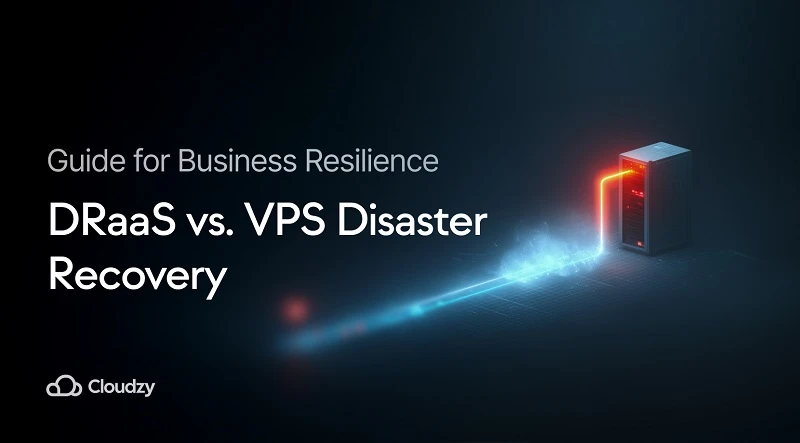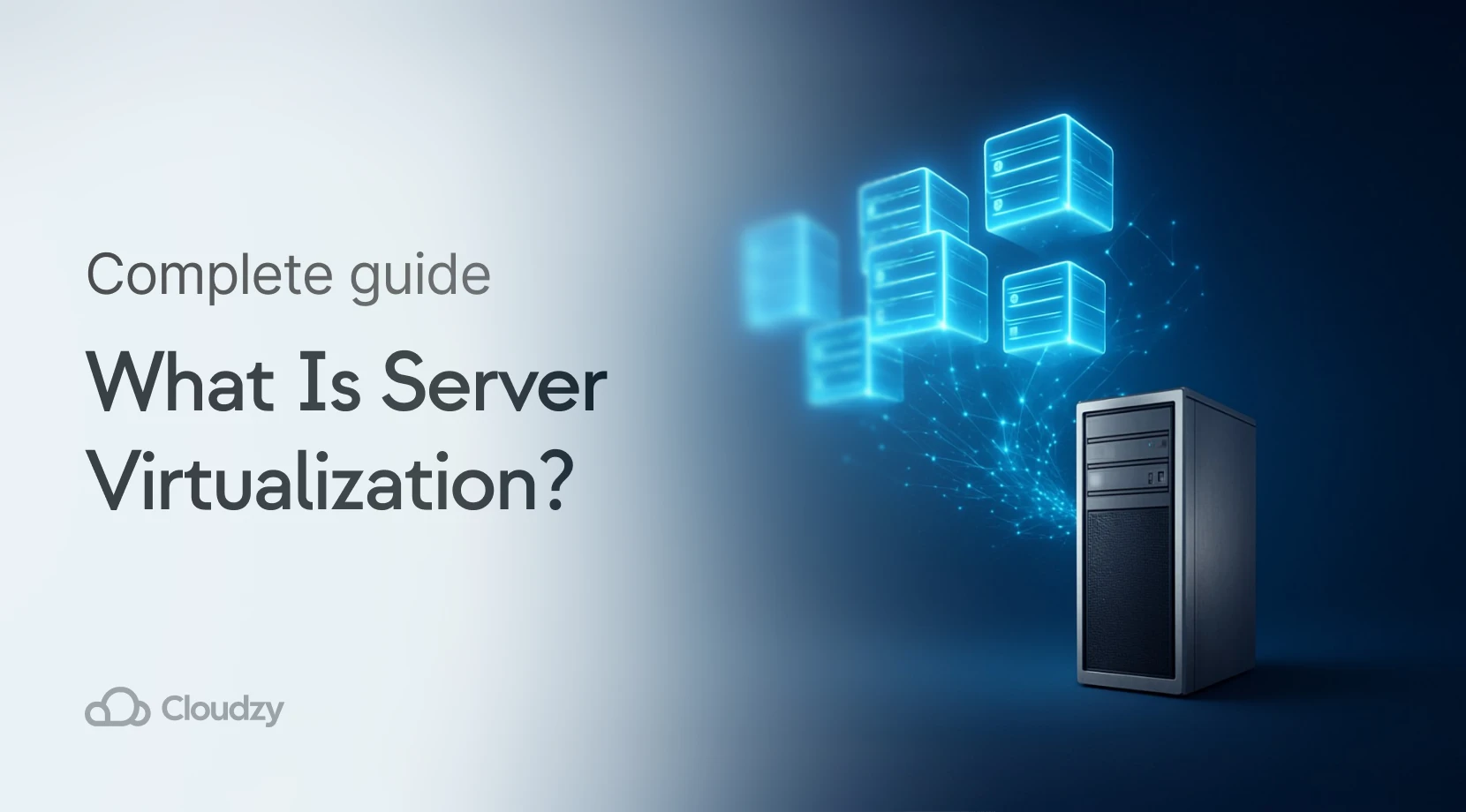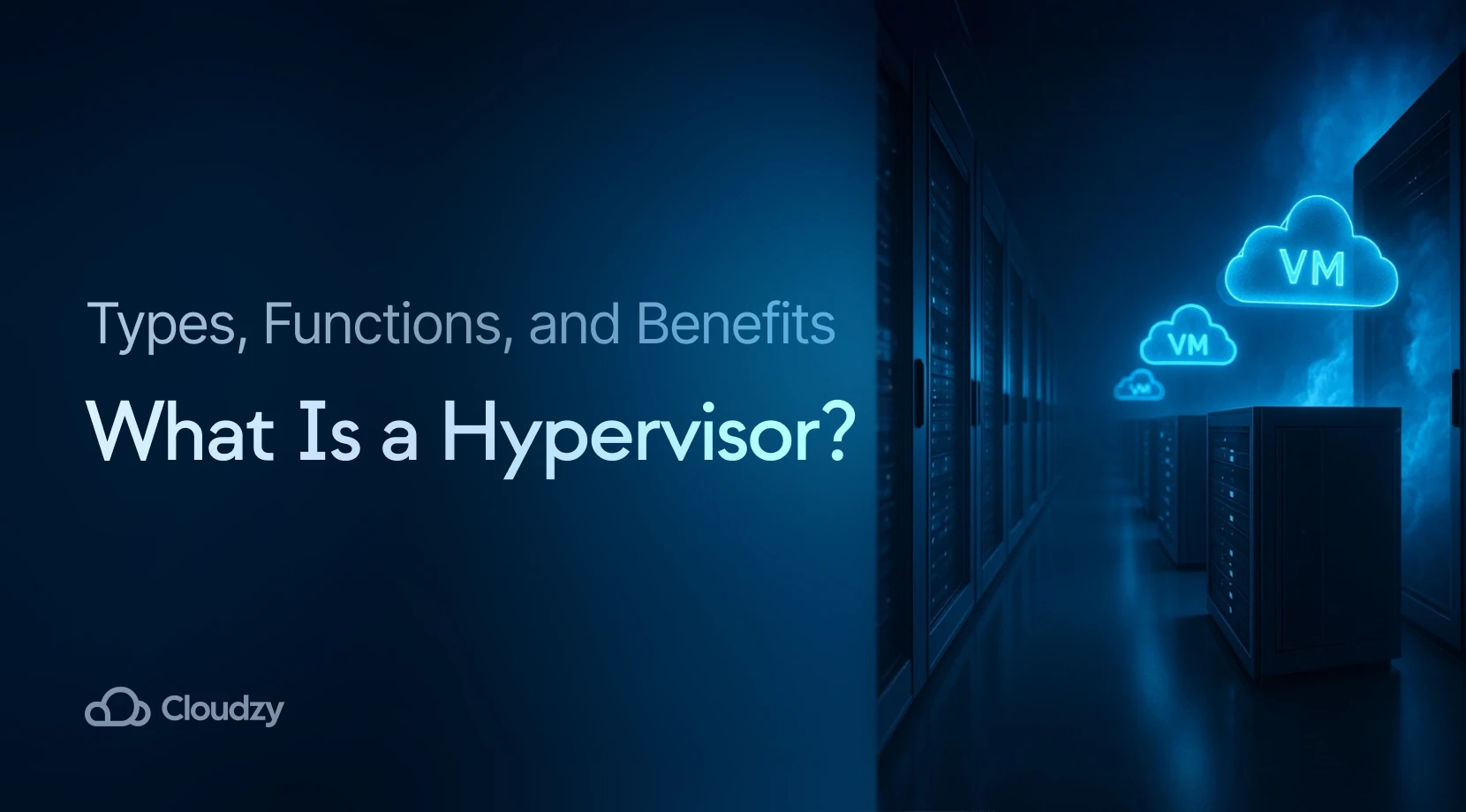Unplanned outages test an organization’s readiness faster than any benchmark report. Two primary playbooks compete for attention: DRaaS vs VPS backup. This article outlines both methods in a balanced, technically focused comparison so that IT managers and SMB (Small and Medium‑Sized Business) owners can align recovery strategies with budget, skill sets, and risk tolerance. If you’re new to the world of clouds and SaaS apps, check out our Cloud Hosting vs. VPS post for a general understanding.
What Is Disaster Recovery (DR) and Why Is It Critical for Your Business?
Disaster recovery is the systematic process of restoring IT services, applications, and data access after interruptions such as hardware failure, ransomware infection, or a regional power outage. By following a structured playbook (rather than ad‑hoc fixes) organizations avoid many potential threats like revenue loss, regulatory fines, and damage to customer trust. Key components in a DR roadmap include:
- Business Impact Analysis (BIA) that ranks applications by financial and operational importance.
- RTO (Recovery Time Objective) and RPO (Recovery Point Objective) targets that define acceptable downtime and data loss.
- Documented run books, routine drills, and compliance audits that confirm plan viability.
Effective programs integrate these elements into normal operations, replacing uncertainty with measurable outcomes.
Understanding DRaaS: How Cloud‑Based DR Works
DRaaS (Disaster Recovery as a Service) maintains a live copy of your virtual machines, databases, and network settings in a provider‑managed cloud region. If the primary site goes offline, the service’s orchestration engine promotes the replicas, updates load‑balancer targets, and resumes user sessions within minutes. An online retailer that adopted AWS Elastic Disaster Recovery, for instance, restored its checkout flow 18 minutes after a power loss, while a healthcare SaaS vendor meets a 15‑second RPO by mirroring SQL clusters with Azure Site Recovery during quarterly drills.
- Automated replication supports tight RTO, RPO, and VPS objectives without extensive scripting.
- Geographic redundancy protects against regional disruptions and maintains service availability.
- 24/7 vendor support manages failover procedures and ongoing maintenance.
Teams that prefer subscription pricing and minimal administrative overhead often select DRaaS. Integrating cloud VPS snapshots into the same vault further strengthens coverage.
VPS‑Based Disaster Recovery: Strategies and Implementation
Building disaster recovery on a VPS (Virtual Private Server) platform offers granular control at every layer.
- VPS data replication options include rsync, block‑level mirroring, and snapshot shipping.
- VPS offsite backup archives encrypted copies in a separate region or object store.
- DIY disaster recovery VPS pipelines use Terraform, Ansible, or similar tools to automate failover and failback.
This approach suits organizations with in‑house DevOps expertise that require custom configurations or must satisfy specific regulatory guidelines.
Offsite Backups and Snapshots for VPS
Offsite backups complement regular snapshots by isolating data from primary infrastructure. Best practices include:
- Hourly snapshots for transactional databases, plus nightly snapshots for static assets.
- End‑to‑end encryption before transport so that contents remain unreadable in transit.
- Storage of at least one copy with a second cloud provider to avoid shared failure domains.
A disciplined backup routine reduces risk from ransomware and hardware faults, adding another layer to DRaaS vs VPS backup planning.
VPS Replication and Failover Setups
Replication establishes a live standby that mirrors production changes. Common patterns are:
- Continuous replication that keeps second‑level RPO at the cost of higher bandwidth.
- Point‑in‑time replication that reduces expense while permitting controlled data loss windows.
- Planned failback procedures that validate the path from standby to primary after repairs.
Choose a replication approach that actually lines up with your RTO and RPO goals. Otherwise the next outage will blindside you.
Cost Comparison: DRaaS Subscription vs. VPS DR Infrastructure
Many teams weigh subscription fees against capital expenses. The table below uses the focus phrase DraaS vs VPS backup in context to highlight budget impacts.
| DRaaS Subscription | VPS DR Infrastructure | Ideal Use Case |
| 100 – 500 USD per month | 30 – 200 USD per month plus initial setup | Small teams requiring quick deployment |
| Managed orchestration included | DIY scripting and oversight | DevOps departments seeking customization |
| Vendor‑provided support | Internal on‑call rotation | Firms already running self‑hosted workloads |
Licensing, network charges, and out‑of‑scope support requests can affect both models. Identify these variables during planning to keep the total cost of ownership predictable.
RTO and RPO: Which Option Recovers Faster?
- In most benchmarks, DRaaS platforms achieve sub‑hour RTO and near‑zero RPO, owing to continuous replication and automated orchestration.
- VPS‑based solutions can deliver similar numbers if engineered with redundant nodes and frequent snapshot intervals. However, gaps appear when staff resources or budget limits restrict testing.
Establish recovery targets first, then confirm that either the DraaS vs. VPS backup method can repeatedly meet those metrics under load.
Complexity and Management: DRaaS Simplicity vs. VPS Control
Selecting a recovery model is not only about price and performance; day‑to‑day management may determine long‑term success. Below is a practical lens—grounded in NIST SP 800‑34 guidelines and Cloudzy’s decade of managed infrastructure experience—that shows how each path affects operational workload:
- DRaaS places configuration, monitoring, and testing inside a consolidated vendor dashboard. Routine tasks such as failover rehearsal or replication tuning become point‑and‑click options, freeing teams for higher‑value projects. For example, Azure Site Recovery lets administrators schedule quarterly drills and receive automated compliance reports—an approach that satisfies auditors without additional scripting.
- VPS environments grant root‑level authority over every kernel flag, firewall chain, and cron job. This flexibility supports niche workloads (e.g., low‑latency trading apps that require custom TCP settings) but amplifies complexity. Maintaining iptables rules, kernel upgrades, and replication scripts can consume 20–30 % of a senior engineer’s weekly capacity, according to internal Cloudzy support ticket data.
Expert tip: Track the ratio of automated to manual recovery tasks as a KPI. Teams with ratios below 0.7 often struggle with recovery drift, where documented procedures no longer reflect production reality.
For a broader view of how managed services can offset administrative overhead while preserving strategic control, see our uses of cloud computing overview.
Security Considerations
Security remains a non‑negotiable pillar of any disaster‑recovery design. Both models rely on the shared responsibility principle, but the dividing line shifts depending on who controls the stack.
- DRaaS providers lock down hypervisors, storage fabrics, and perimeter firewalls. Customers still must harden guest operating systems, rotate API keys, and enforce multi‑factor authentication on management consoles. Example: A retail SaaS platform that failed over to Azure Site Recovery during a ransomware incident restored services in under 40 minutes, yet stale admin tokens allowed attackers to reconnoiter the new environment—highlighting how credential hygiene remains essential even with managed DR.
- VPS administrators own every layer from kernel patches to SSH policies. A fintech startup that maintains PostgreSQL replicas on self‑managed VPS nodes encrypts data at rest with LUKS, tunnels replication traffic through WireGuard, and schedules weekly CIS benchmark scans to maintain PCI‑DSS compliance.
Regardless of the model you select, enforce end‑to‑end encryption, implement immutable audit logging for privileged actions, and validate every restore point for hidden malware. For a concise overview of foundational measures like access control and segmentation, check out our article on what is cloud security.
Scenario Guide: Choosing Between DRaaS and a VPS‑Based Strategy
Making an informed choice comes down to three factors: team capability, budget model, and recovery targets:
- Lean teams seeking predictable OPEX: If your organization operates with limited on‑call staff and prefers subscription spending, DRaaS provides automated failover, sub‑hour RTO, and sub‑five‑minute RPO under a provider‑managed SLA.
- DevOps‑ready teams favoring CapEx: Enterprises with in‑house engineers and a preference for one‑time infrastructure investments can craft a VPS DR topology that achieves one‑to‑two‑hour RTO and roughly thirty‑minute RPO while retaining full configuration control.
Conclusion
Selecting between DRaaS and a VPS‑driven blueprint comes down to aligning recovery objectives with your team’s capacity and budget realities. Quantify RTO and RPO targets, expose hidden operational costs and validate both paths through regular failover drills before committing. The right choice turns an outage into a brief footnote and not a headline. For a broader perspective on infrastructure options, you can read more about how virtualization in cloud computing works.



